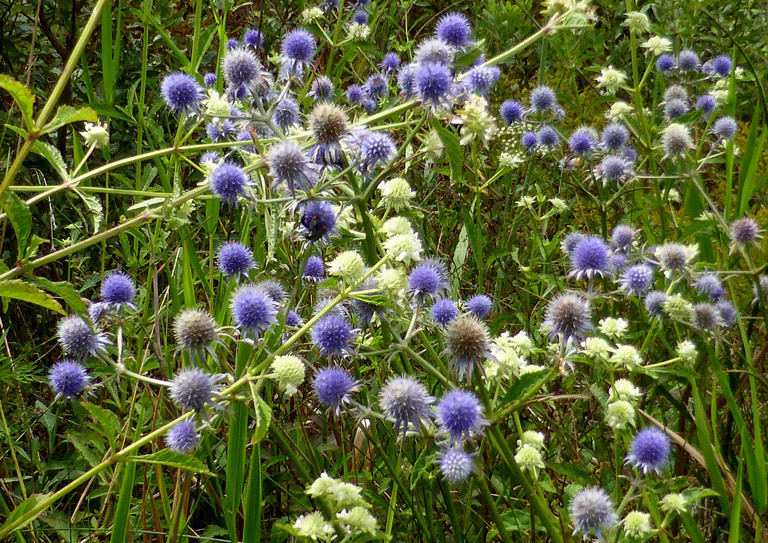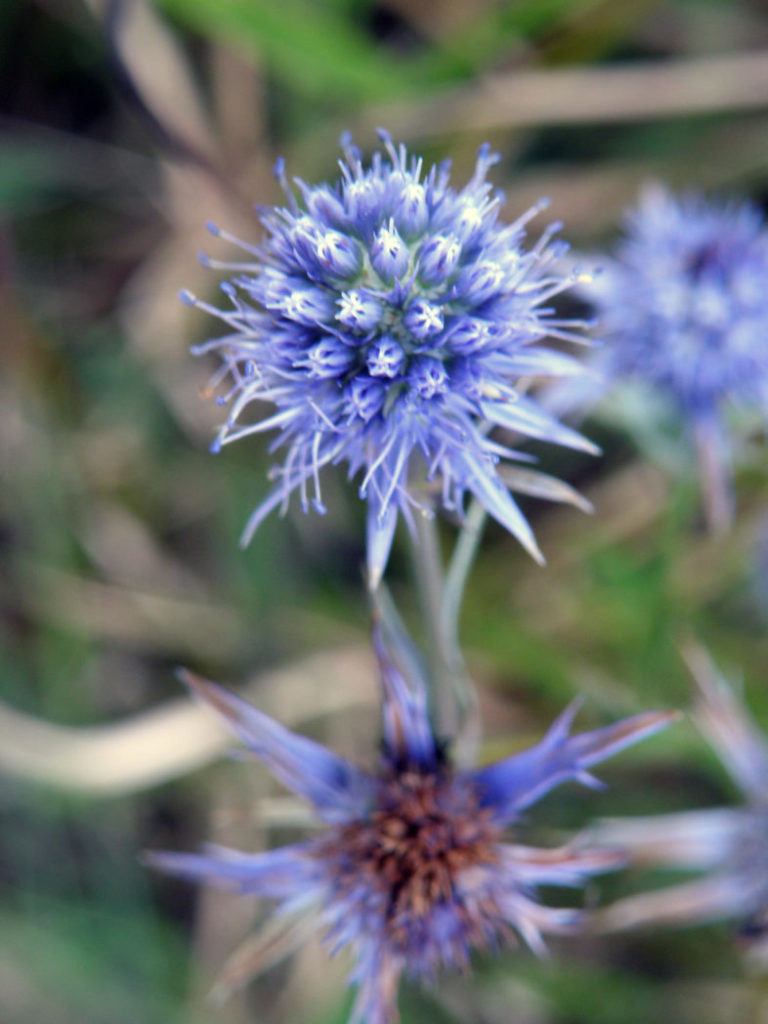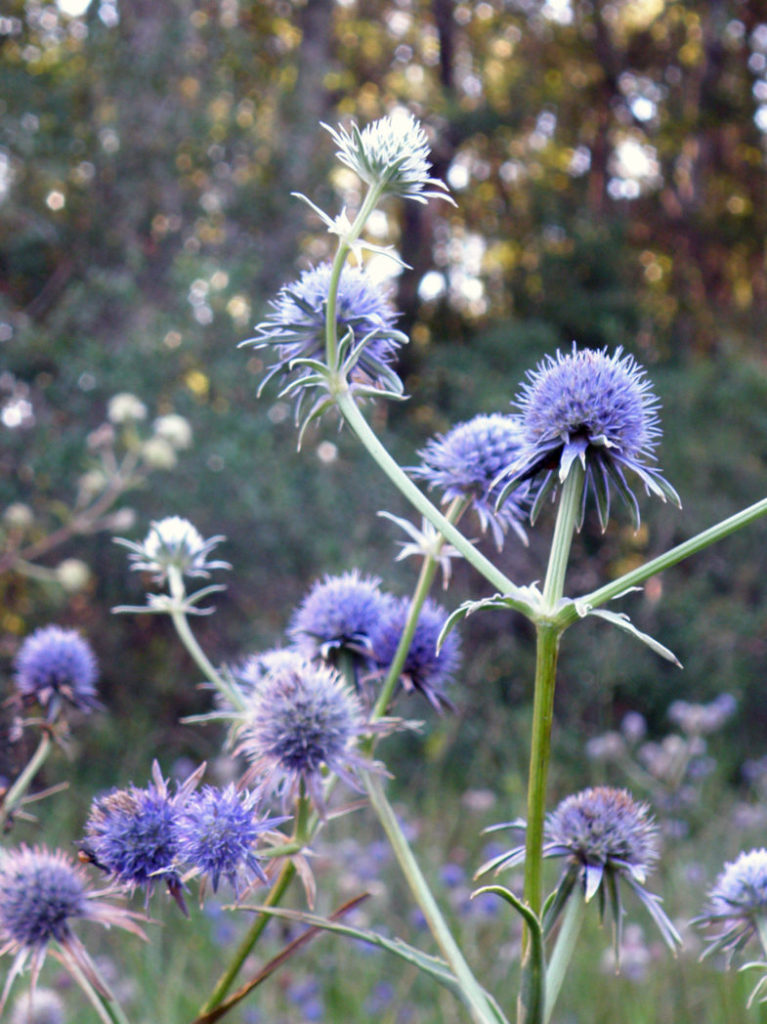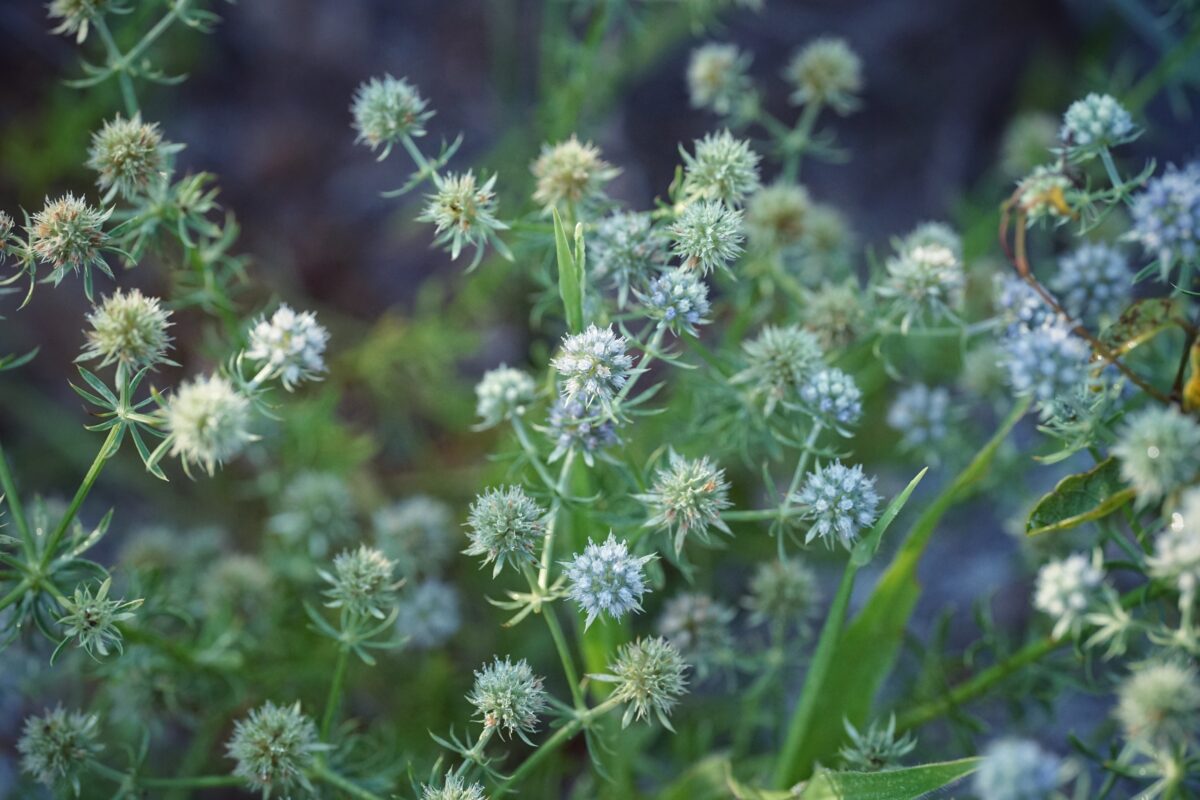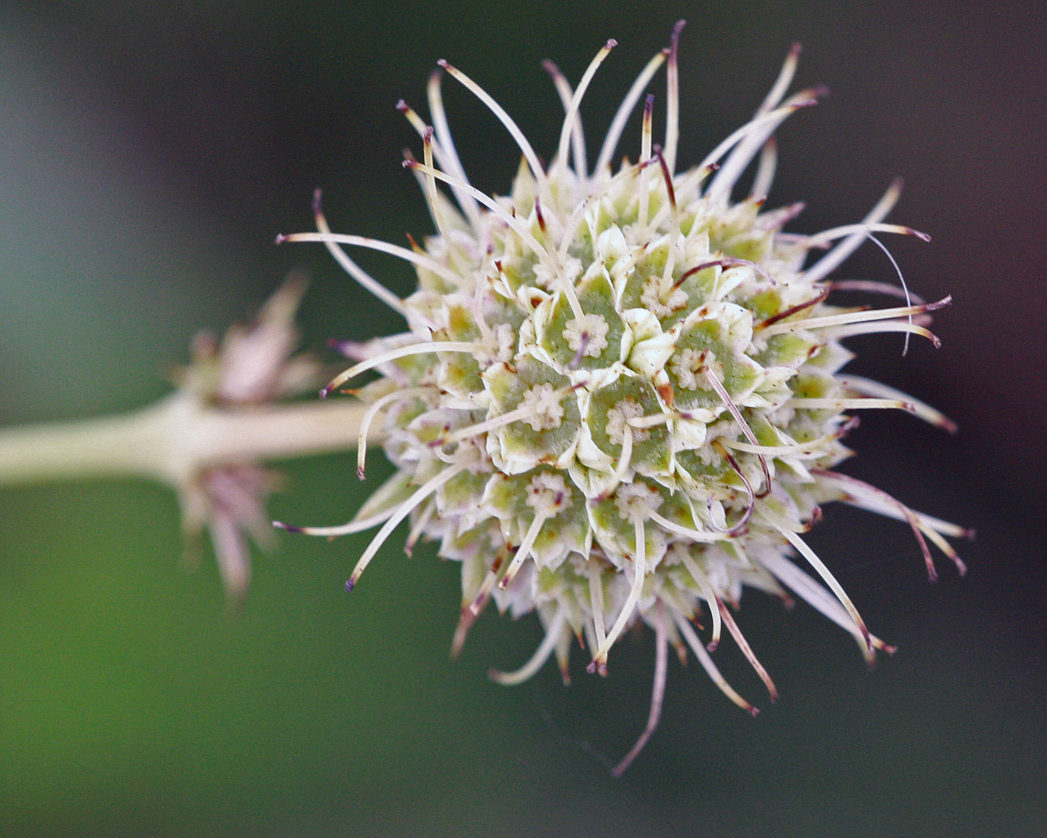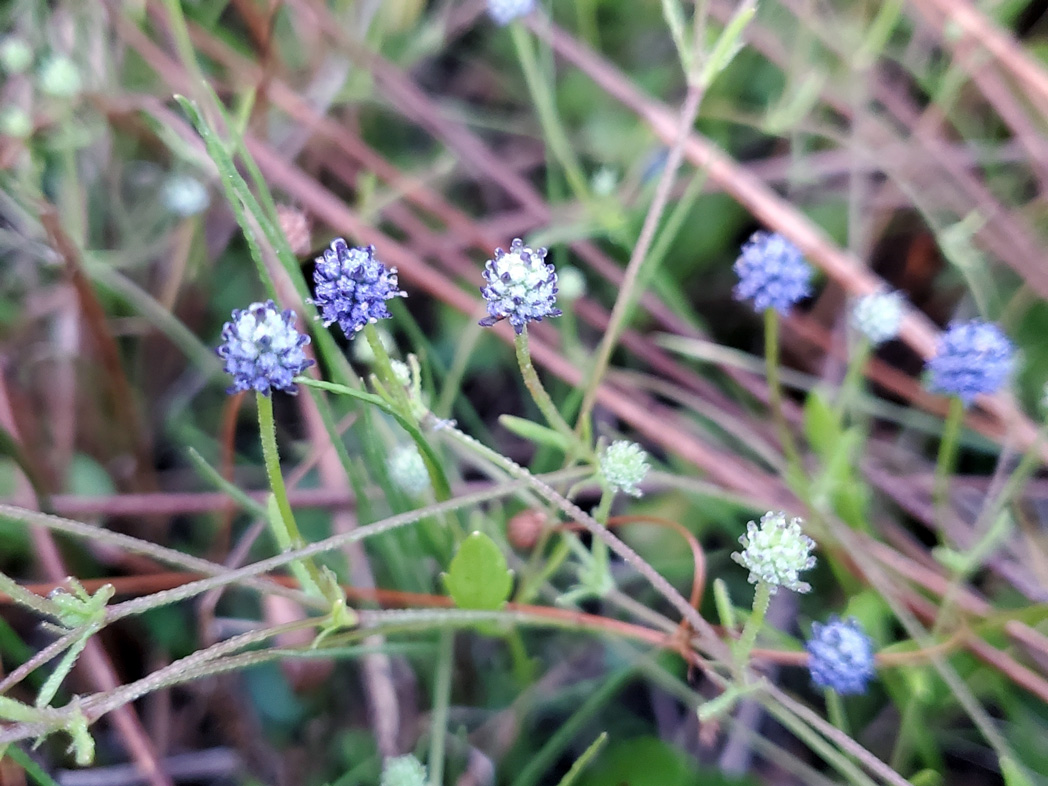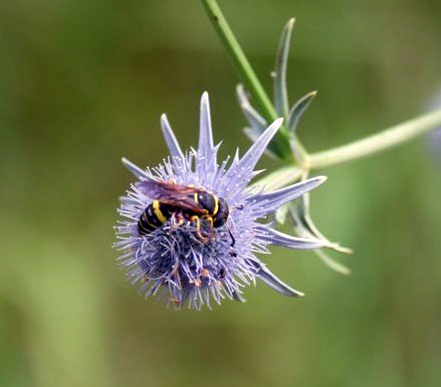Corn snakeroot
Pictured above: Corn snakeroot (Eryngium aquaticum) by Eleanor Dietrich. Click on terms for botanical definitions. View post as a PDF.
Corn snakeroot (Eryngium aquaticum) blooms vary in color from a pale whitish-blue to a rich lavender or cornflower blue. Flowerheads are about 1/2” to 1” in diameter, globular and are surrounded by spiny bracts. They are borne near the tops of multi-branched, erect stems. Leaves are sessile, linear and alternately arranged. Leaf margins are entire or may be finely toothed.
Corn snakeroot typically flowers summer through late fall. A variety of pollinators are attracted to its flowers. It occurs naturally in sunny marshes and swamps, along pond edges and in ditches.
The common name snakeroot (also known as rattlesnakemaster, both of which are used to describe the Eryngium genus) may have come from its use in Native American culture as a remedy for snakebite.
Family: Apiaceae (or Umbelliferae) (Carrot or parsley family)
Native range: Eastern and central Panhandle, Santa Rosa County, several counties in north and central peninsula
To see where natural populations of corn snakeroot have been vouchered, visit florida.plantatlas.usf.edu.
Life span: Short-lived perennial
Soil: Moist to wet, acidic soils
Exposure: Full sun to moderate shade
Growth habit: 3–5’ tall
Propagation: Seed
Florida regions of landscape suitability: North, Central
Garden tips: Corn snakeroot can make a nice addition to a mixed wildflower garden attracting a wide variety of pollinators but may also be a bit challenging to maintain. It is not drought tolerant and requires consistently moist to wet soil. Additionally, as a short-lived perennial that does not reseed abundantly plants may need to be replaced periodically.
Corn snakeroot is sometimes available at nurseries that specialize in native plants. Visit PlantRealFlorida.org to find a native nursery on your area.
Learn more about Corn snakeroot from the Florida Native Plant Society and the Institute for Regional Conservation.
For information on other Eryngium species, see these resources:

